Redness, bumps, sensitivity — these symptoms may sound like acne, but they may actually be a sign of rosacea. And with a condition like rosacea, you want to be extra gentle with not just your skin but your lifestyle (and stress levels!). Here, we ask the experts for tips on managing rosacea and how a 5-step K-beauty routine can help your skin look more rosy and less rosacea-prone.
In many cultures, rosy cheeks are a symbol of health and vitality. Globally, women strive to attain that pinched cheek look of radiance by investing in blush. However, chronic redness in the complexion, especially accompanied by small bumps, can be a sign of something more sinister: rosacea.
What is rosacea?
According to dermatologist Joshua Zeichner, M.D., the director of cosmetics and clinical research at Mount Sinai Hospital in New York City, “Rosacea is a condition in which the skin is overly sensitive to the environment and hyper-reactive to triggers that would not normally upset the skin. There is overactivity of the immune system in the skin and abnormal activity of blood vessels. This leads to red bumps and pus pimples as well as facial flushing.”
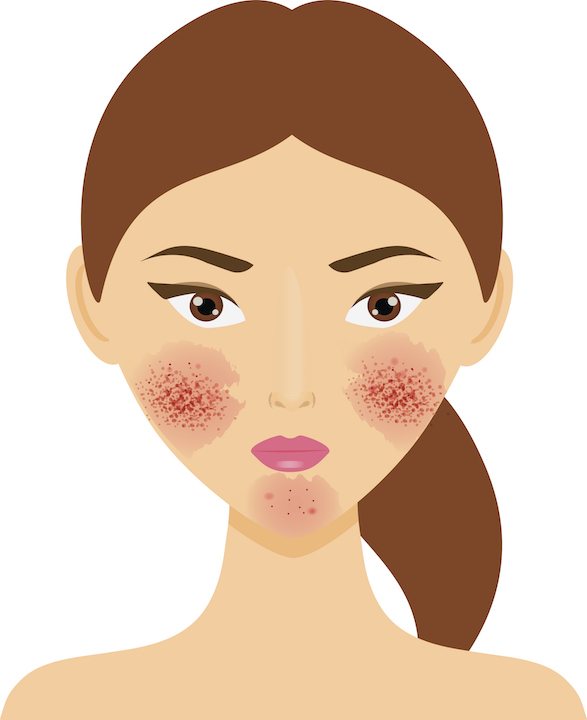
What causes rosacea?
The cause of rosacea is unknown. There are a number of factors that can increase blood flow to the face and cause agitation to existing rosacea. “Lifestyle affects rosacea greatly,” says South Korean dermatologist Younglak Choi, M.D. “For instance, patients must avoid drinking alcohol and try to eat mild foods.”
According to rosacea.org, other factors that trigger rosacea inflammation include environmental factors such as wind and sunlight exposure, cosmetics high in irritants like alcohol and fragrance, strenuous physical exercise, and emotional triggers such as stress and anxiety.
Can a Korean skincare routine help to manage rosacea?
Yes. Korean skincare practices and products are internationally recognized for clearing complexions and producing radiant results. But remember, like sensitive skin types, what may work for you may irritate someone else, so always patch test before you try something new!
With that in mind, if you’re interested in a K-beauty routine that may help reduce rosacea irritation and inflammation, read on.
The Tips
Tip 1: Avoid irritants
The key to reducing rosacea flare-ups is to know which skincare ingredients to avoid. Michelle Wong, Ph.D., the powerhouse behind science-based beauty blog Lab Muffin, recommends avoiding “irritants like methylisothiazolinone [a harsh preservative], essential oils, and heavy fragrance.” Other common irritants include alcohol, witch hazel, menthol, peppermint, and eucalyptus oil.
Tip 2: Incorporate skin soothers
Anti-inflammatory ingredients are the key to a happy complexion. Korean beauty offers a variety of skin soothers. These ingredients include rice water, licorice root extract, ginger, and cucumber extract.
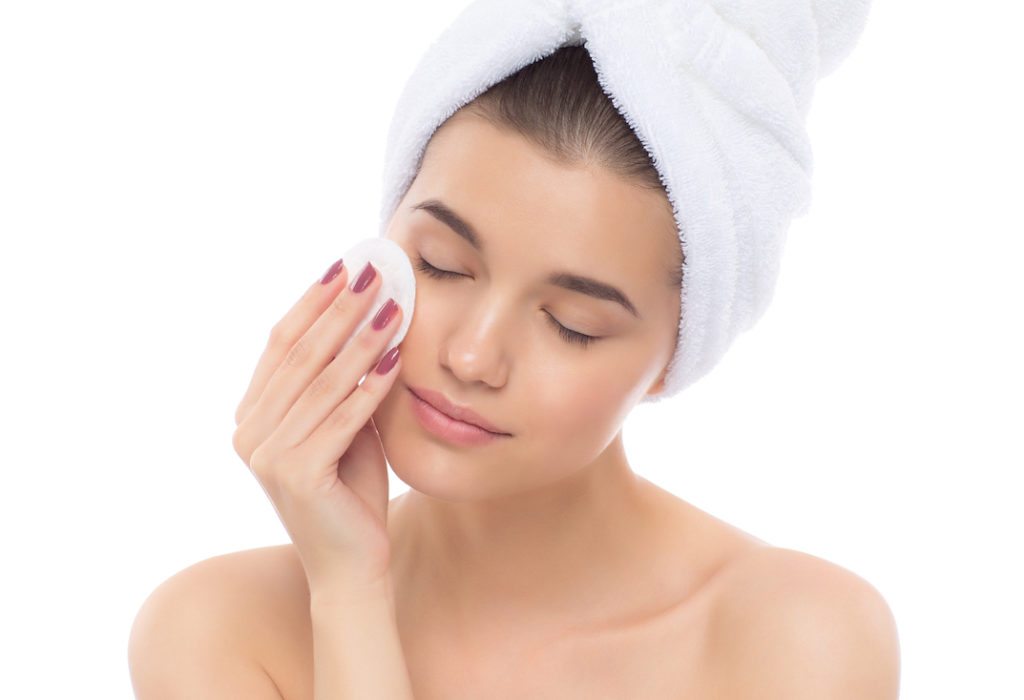
Tip 3: Always use protection
There are skincare ingredients that you can incorporate into parts of your routine that help to protect the skin. “Barrier protection ingredients like niacinamide, ceramides, glycerin and dimethicone are great,” says Wong.
The Routine
Step 1: Double Cleanse
Koreans cleanse not once but twice. An oil cleanser is applied to dry skin to melt away oil-based debris such as makeup and sunscreen. A water-based cleanser is then applied to wet skin to remove water-based impurities such as sweat and dirt.
People with rosacea should follow two criteria when choosing their cleansers:
1. Choose an oil-based cleanser geared towards sensitive skin. A great option is Banila Co Clean It Zero Purity. It contains anti-inflammatory licorice root extract, soothing evening primrose oil, and hydrating aloe leaf extract.
2. Select a water-based cleanser close to the pH of 5.5 to avoid irritation. Many Korean cleansers list the pH of their cleansers. However, if it is not listed, you can buy pH strips to test them. These are available on Amazon, major retailers such as Target, and hardware stores. A great option is the Atopalm Moisturizing Facial Cleansing Foam, which has the desirable pH of 5.5.
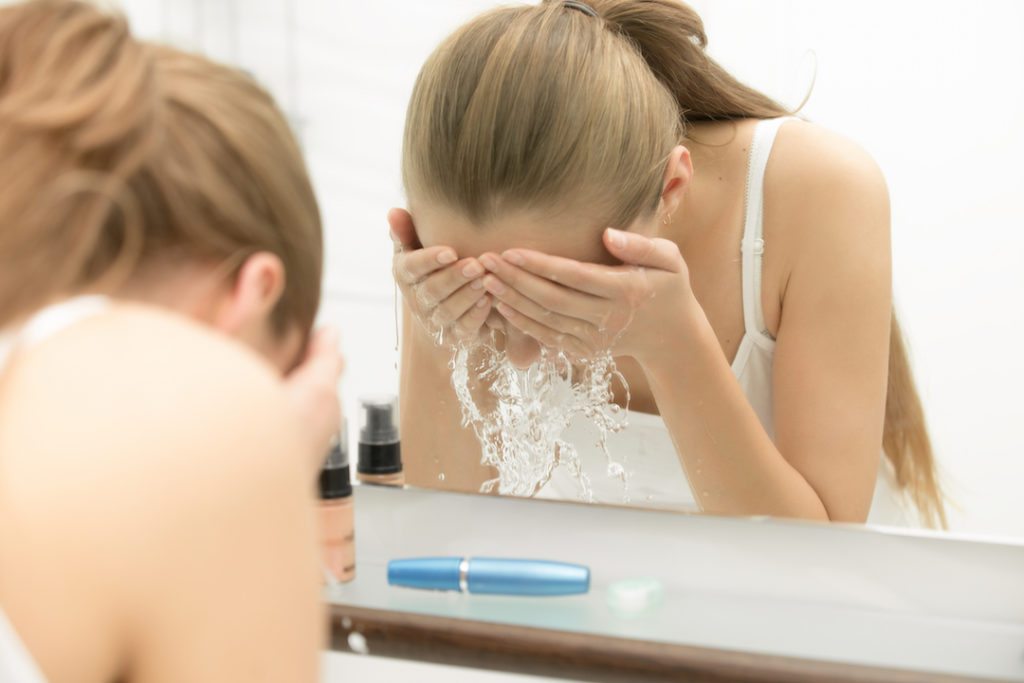
Step 2: Toner
Toners are important because they help remove any residue left over from your cleanser, reset the pH level of your skin, and prepare your face to absorb the next steps of your skincare routine. Korean toners tend to be hydrating rather than astringent. This is important for people with rosacea because astringent toners can prevent the skin from properly repairing itself and can trigger unwanted inflammation. Etude House Soon Jung pH 5.5 Relief Toner calms with anti-inflammatory skullcap extract and healing madecassoside.
Step 3: Essence/Serum
The essence (also called serum) is the heart of Korean skincare. Essences provide a layer of essential hydration and aid in skin reparation. People with rosacea can benefit from using an essence because:
1. Hydrated skin is better protected against environmental assaults that can cause rosacea flare-ups.
2. Essences provide a gentle dose of beneficial active ingredients.
PURITO Centella Green Level Buffet Serum may be a rosacea-friendly option because it has 49% Centella asiatica extract, known for its soothing and healing properties, anti-inflammatory licorice root extract, and skin strengthening ceramide.
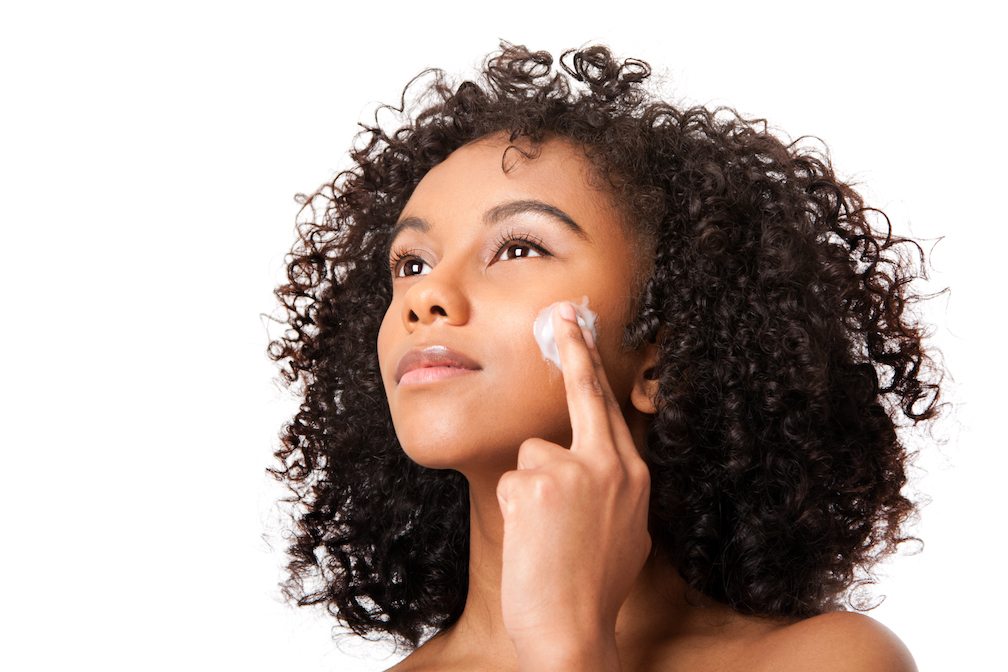
Step 4: Moisturizer
After your essence, apply a moisturizer to seal in the hydration. Excellent K-beauty hydrating ingredients for people with rosacea include snail mucin, green tea, and saccharomyces filtrate. Mizon’s Snail Recovery Gel Cream contains an abundance of snail mucin for a powerful punch of hydration.
Step 5: Sunscreen
UV rays are the best known irritant to rosacea. Therefore, it is essential to always protect your face with SPF. Experts recommend using an SPF of at least 30. It is important to remember to reapply sunscreen throughout the day. Klairs Midday Blue Sun Lotion SPF40 PA++ has a blue tint to counteract redness and features guaiazulene for its anti-inflammatory and calming properties.
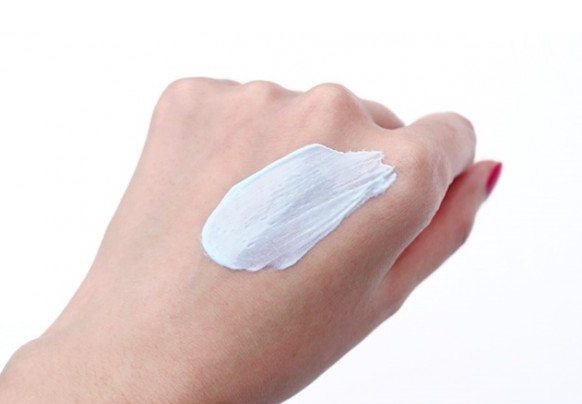
Final Thoughts
The experts have a few final words of advice for people with rosacea.
Dr. Zeichner advises: “Use gentle, hydrating skin cleansers as well as moisturizers to help keep the skin’s barrier in as good shape as possible.”
Michelle Wong suggests that you “keep track of your triggers so you can avoid them!”
Dr. Choi, M.D., says that “getting light, regular exercise and having enough sleep can help rosacea.”
Rosacea does not have the power — you do. Armed with the advice of experts and the most effective K-beauty products and practices, you have the power to put your best face forward. Nothing feels or looks better.
How do you deal with rosacea? Has Korean skincare helped your skin issues? Share with us in the comments!
Loading...